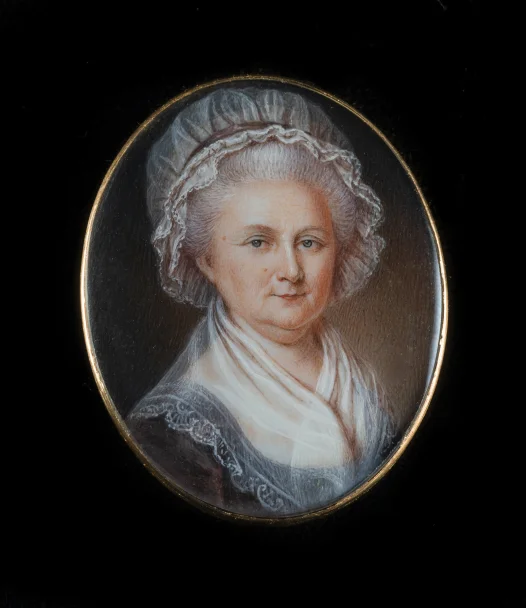Few of Martha Washington’s letters survive, so her feelings often remain elusive. Still, her actions suggest she did not question slavery as George Washington did.
Martha Dandridge Custis Washington was born into Virginia’s elite society in 1731 and surrounded by enslaved people for her entire life. Her first husband, Daniel Parke Custis, was one of the wealthiest planters in Virginia. When Custis died, his widow received life rights to one-third of his property, including 84 slaves. After George and Martha Washington married in 1759, she took many of these people with her to Mount Vernon. As property of the Custis estate, they could not legally be freed or sold, and were inherited by the Custis heirs upon Martha Washington’s death.
The Blacks are so bad in their nature that they have not the least grat[i]tude for the kindness that may be shewed to them.
-Martha Washington, 1795
As mistress of Mount Vernon, Martha Washington interacted with enslaved people daily as she supervised the household’s cooks, maids, seamstresses, and the nurses who cared for her children. Martha never articulated her views on slavery. But growing up immersed in the hierarchical society of 18th-century Virginia, she did not seem to question the institution as George Washington ultimately did.
She was furious when her personal maid, Ona Judge, escaped to New Hampshire, viewing the act as a betrayal. In her 1802 will, Martha bequeathed the only slave she owned directly—a man named Elish—to her grandson, choosing not to follow her husband’s example by freeing her enslaved property.
Martha Washington's Will
Take an in-depth look at the will of Martha Washington, who died on May 22, 1802.
Martha Washington
When her first husband died, at just 26 years old, Martha was the wealthiest widow in Virginia.
Learn more
The content on this page was adapted from Lives Bound Together: Slavery at George Washington’s Mount Vernon, an exhibition on view from 2016–2020.
In 2025, Mount Vernon opened a reimagined version of the Lives Bound Together exhibition within the historic greenhouse quarters.
